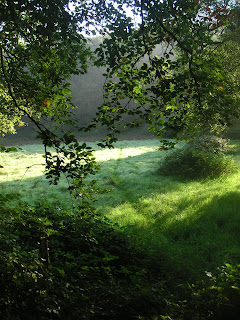Walking is our most natural pace. The moderate
speed allows us to gain the greatest appreciation of what we pass. Early man
needed to assess signs and sounds of danger and to spy out sources of food and
water, all of which required a level of examination of the terrain he passed
through that can only be achieved by pacing or striding. Jogging and running,
cycling and horseback riding separate us from the detail of landscape by speed
or height. By those methods we notice less: screeds of bluebells but not the
first violets; a beautiful old stone wall but not the little heads of stoats
peeping out of the cracks; a fish jumping from the river but not the tracks of
otters on the bank. The detail needs time and deliberate searching by eye, and
it’s the detail that raises the level of experience and a sense of connection
with the other inhabitants of the earth as well as nature’s manifests.
The same is true of walking in an urban
environment. We need our senses to be alert but also our movement to be slow
enough to separate a blur of buildings or a flash of green space. Driving
through a town in a car or riding a bike requires attention to be focused on
the travel itself for safety. Stopping and starting may provide moments of
observation but these are hardly leisured and the flow of traffic usually dictates
the pace of passage. It’s possible to admire a street of medieval half-timbered
houses, to get a sense of historic atmosphere through glimpses of architecture,
but you have to walk to access the minutiae of decorative art. You also have to
walk to appreciate fully the development of settlement patterns, the
relationship between older and newer elements, the changing demands of society
in an urban environment.
The complexity of landscape we have created can
only be appreciated through the simplest of movements.


No comments:
Post a Comment